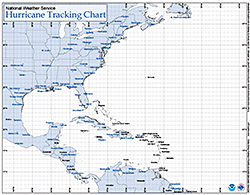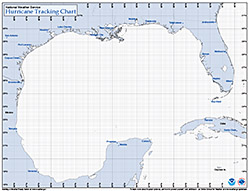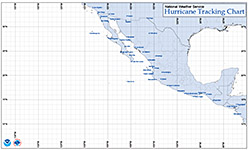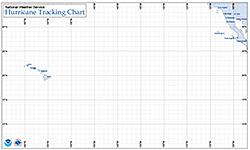For several hundred years, many hurricanes in the West Indies were named after the particular saint's day on which the hurricane occurred. Ivan R. Tannehill describes in his book "Hurricanes" the major tropical storms of recorded history and mentions many hurricanes named after saints.
For example, there was "Hurricane Santa Ana", which struck Puerto Rico with exceptional violence on July 26, 1825, and "San Felipe" (the first) and "San Felipe" (the second), which hit Puerto Rico on September 13 in 1876 and 1928, respectively.
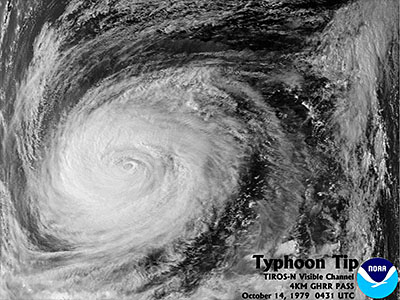
The first known meteorologist to assign names to tropical cyclones was Clement Wragge, an Australian meteorologist. At the end of the l9th century, he first used letters of the Greek alphabet, then names from Greek and Roman mythology, and eventually progressed to the use of feminine names.
In the United States, an early example of the use of a woman's name for a storm was in the novel "Storm" by George R. Stewart, published by Random House in 1941. During World War II, this practice became widespread in weather map discussions among forecasters, especially Air Force and Navy meteorologists who plotted the movements of storms over the wide expanses of the Pacific Ocean.
In 1953, United States weather services began using female names for storms after abandoned a confusing a two-year old plan to name storms by a phonetic alphabet (Able, Baker, Charlie, etc.).
The practice of naming hurricanes solely after women came to an end in 1978, when both men's and women's names were included in the Eastern North Pacific storm lists. In 1979, male and female names were also included in lists for the Atlantic and Gulf of Mexico.
Why Tropical Cyclones Are Named
Experience shows that the use of short, distinctive, given names in written and spoken communications is quicker and less subject to error than the older, more cumbersome latitude-longitude identification methods.
These advantages are especially important in exchanging detailed storm information between hundreds of widely scattered stations, airports, coastal bases, and ships at sea.
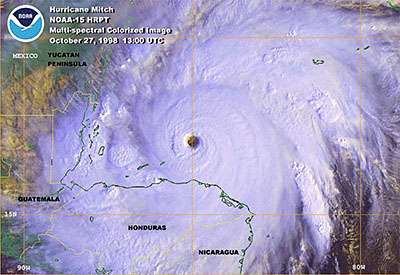
The use of easily remembered names greatly reduces confusion when two or more tropical storms occur at the same time. For example, one hurricane can be moving slowly westward in the Gulf of Mexico, while at exactly the same time, another hurricane can be moving rapidly northward along the Atlantic coast.
In the past, confusion and false rumors have arisen when storm advisories broadcast from one radio station were mistaken for warnings concerning an entirely different storm located hundreds of miles away.
The name lists draw from a variety of languages because hurricanes affect multiple nations and are tracked by the public and weather services of many countries, not just the United States. The nations involved agree upon the lists during international meetings of the World Meteorological Organization.
The National Hurricane Center (NHC) keeps a list of current and retired names.
Atlantic Basin Names

The National Hurricane Center (RSMC Miami, FL) is responsible for the Atlantic Basin west of 30°W. If a disturbance intensifies into a tropical storm, the Center will give the storm a name from one of the six lists below.
A separate set is used each year, beginning with the first name in the set. After the sets have all been used, they will be used again. The 2023 set, for example, will be used again to name storms in the year 2029.
The letters Q, U, X, Y, and Z are not included because of the scarcity of names beginning with those letters and because they are not easily understood by all languages that utilize the lists.
Until 2020, if over 21 named tropical cyclones occur in a year, the Greek alphabet was used following the "W" name. However, this list was found to cause confusion in certain circumstances and replaced. Today, a supplemental list is used.
On average, there are 14 named tropical cyclones, with 7 becoming hurricanes, and of those 7, on average 3 become Category 3 or greater.
| 2023 | 2024 | 2025 | 2026 | 2027 | 2028 |
|---|---|---|---|---|---|
| Arlene Bret Cindy Don Emily Franklin Gert Harold Idalia Jose Katia Lee Margot Nigel Ophelia Philippe Rina Sean Tammy Vince Whitney |
Alberto Beryl Chris Debby Ernesto Francine Gordon Helene Isaac Joyce Kirk Leslie Milton Nadine Oscar Patty Rafael Sara Tony Valerie William |
Andrea Barry Chantal Dexter Erin Fernand Gabrielle Humberto Imelda Jerry Karen Lorenzo Melissa Nestor Olga Pablo Rebekah Sebastien Tanya Van Wendy |
Arthur Bertha Cristobal Dolly Edouard Fay Gonzalo Hanna Isaias Josephine Kyle Leah Marco Nana Omar Paulette Rene Sally Teddy Vicky Wilfred |
Ana Bill Claudette Danny Elsa Fred Grace Henri Imani Julian Kate Larry Mindy Nicholas Odette Peter Rose Sam Teresa Victor Wanda |
Alex Bonnie Colin Danielle Earl Farrah Gaston Hermine Idris Julia Karl Lisa Martin Nicole Owen Paula Richard Shary Tobias Virginie Walter |
| Supplemental List | ||
|---|---|---|
| Adria Braylen Caridad Deshawn Emery Foster Gemma Heath Isla Jacobus Kenzie Lucio Makayla Nolan Orlanda Pax Ronin Sophie Tayshaun Viviana Willy |
||
Retired hurricane names: Atlantic Basin
The only time the lists above change is when a storm is so deadly or costly that the future use of its name on a different storm would be inappropriate or insensitive. In this situation, the name will be stricken from the list and another name is selected to replace it at the annual meeting of the World Meteorological Organization (WMO).
The retired names are as follows:
- A: Allison (2001), Andrew (1992), Alicia (1983), Allen (1980), Anita (1977), Agnes (1972), Audrey (1957)
- B: Bob (1991), Beulah (1967), Betsy (1965)
- C: Charley (2004), Cesar (1996), Carmen (1974), Celia (1970), Camille (1969), Carol (1965), Cleo (1964), Carla (1961), Connie (1955)
- D: Dorian (2019), Dean (2007), Dennis (2005), Diana (1990), David (1979), Dora (1964), Donna (1960), Diane (1955)
- E: Erika (2015), Elena (1985), Eloise (1975), Edna (1968)
- F: Fiona (2022), Florence (2018), Felix (2007), Frances (2004), Fabian (2003), Floyd (1999), Fran (1996), Frederic (1979), Fifi (1974), Flora (1963)
- G: Gustav (2008), Georges (1998), Gilbert (1988), Gloria (1985), Gracie (1959)
- H: Harvey (2017), Hortense (1996), Hugo (1989), Hilda (1964), Hattie (1961), Hazel (1954)
- I: Ian (2022), Ida (2021), Irma (2017), Ingrid (2013), Irene (2011), Igor (2010), Ike (2008), Ivan (2004), Isabel (2003), Isidore (2002), Iris (2001), Inez (1966), Ione (1955)
- J: Joaquin (2015), Jeanne (2004), Juan (2003), Joan (1988), Janet (1955)
- K: Katrina (2005), Keith (2000), Klaus (1990)
- L: Laura (2020), Lili (2002), Lenny (1999), Luis (1995)
- M: Michael (2018), Maria (2017), Matthew (2016), Michelle (2001), Mitch (1998), Marilyn (1995)
- N: Nate (2017), Noel (2007)
- O: Otto (2016), Opal (1995)
- P: Paloma (2008)
- R: Rita (2005), Roxanne (1995)
- S: Sandy (2012), Stan (2005)
- T: Tomas (2010)
- W: Wilma (2005)
- Greek Alphabet: Eta (2020), Iota (2020)
Eastern North Pacific Names
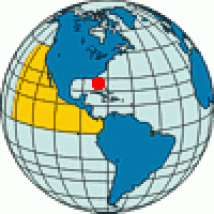
The National Hurricane Center (RSMC Miami, FL) is is also responsible for the North East Pacific Basin east of 140°W.
If a disturbance intensifies into a tropical storm, the Center will give the storm a name from one of the six lists below. A separate set is used each year beginning with the first name in the set.
On average there are 15 named tropical cyclones, with eight becoming hurricanes, and three becoming Category 3 or greater.
After the sets have all been used, they will be repeated.
| 2023 | 2024 | 2025 | 2026 | 2027 | 2028 |
|---|---|---|---|---|---|
| Adrian Beatriz Calvin Dora Eugene Fernanda Greg Hilary Irwin Jova Kenneth Lidia Max Norma Otis Pilar Ramon Selma Todd Veronica Wiley Xina York Zelda |
Aletta Bud Carlotta Daniel Emilia Fabio Gilma Hector Ileana John Kristy Lane Miriam Norman Olivia Paul Rosa Sergio Tara Vicente Willa Xavier Yolanda Zeke |
Alvin Barbara Cosme Dalila Erick Flossie Gil Henriette Ivo Juliette Kiko Lorena Mario Narda Octave Priscilla Raymond Sonia Tico Velma Wallis Xina York Zelda |
Amanda Boris Cristina Douglas Elida Fausto Genevieve Hernan Iselle Julio Karina Lowell Marie Norbert Odalys Polo Rachel Simon Trudy Vance Winnie Xavier Yolanda Zeke |
Andres Blanca Carlos Dolores Enrique Felicia Guillermo Hilda Ignacio Jimena Kevin Linda Marty Nora Olaf Pamela Rick Sandra Terry Vivian Waldo Xina York Zelda |
Agatha Blas Celia Darby Estelle Frank Georgette Howard Ivette Javier Kay Lester Madeline Newton Orlene Paine Roslyn Seymour Tina Virgil Winifred Xavier Yolanda Zeke |
Central North Pacific Names
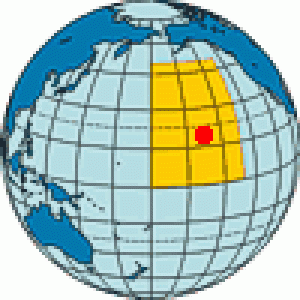
Central Pacific Hurricane Center (RSMC Honolulu, HI) area of responsibility is from 140°W longitude to 180° longitude. The names below are used one after the other. When the bottom of one list is reached, the next name comes from the top of the next list.
| List 1 Akoni Ema Hone Iona Keli Lala Moke Nolo Olana Pena Ulana Wale |
List 2 Aka Ekeka Hene Iolana Keoni Lino Mele Nona Oliwa Pama Upana Wene |
List 3 Alika Ele Huko Iopa Kika Lana Maka Neki Omeka Pewa Unala Wali |
List 4 Ana Ela Halola Iune Kilo Loke Malia Niala Oho Pali Ulika Walaka |
Other Basin Names (Worldwide)
Lists of names for other tropical cyclone basins outside of National Hurricane Center's area of responsibility can be found on the World Meteorological Organization tropical cyclone naming page offsite link.


